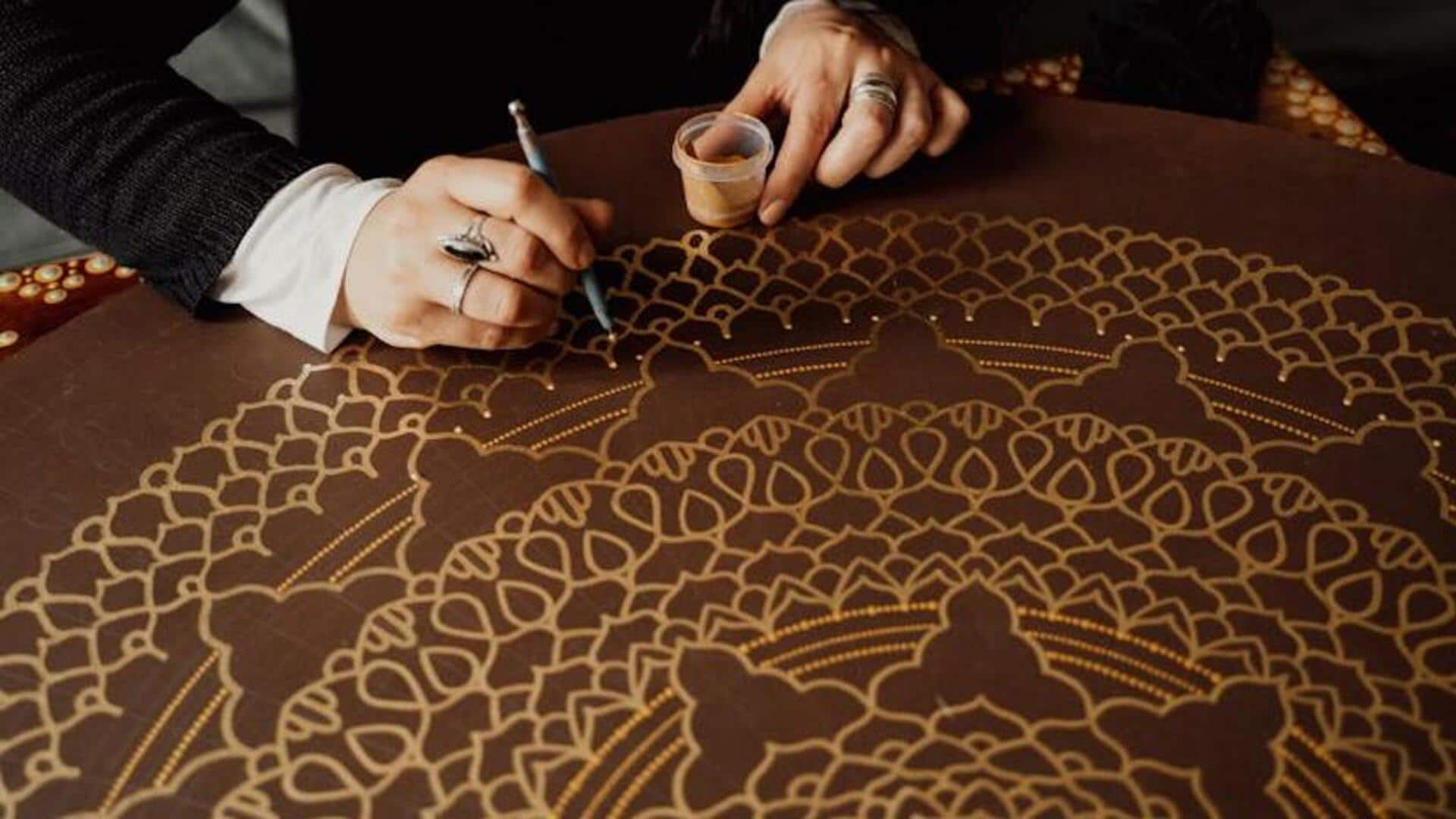
Easiest ways to boost your attention span
What's the story
Art therapy is a creative way of utilizing artistic expression to enhance mental well-being. It can also be particularly useful for improving focus and concentration.
By practicing various forms of art, one can channel their thoughts and feelings, resulting in better cognitive functioning.
Here are five practical art therapy techniques that can help improve focus and attention. Simple yet effective ways to add creativity to your daily routine.
Drawing focus
Drawing for mindfulness
Engaging in drawing activities can significantly enhance mindfulness and concentration.
By focusing on the details of a drawing, you train your mind to concentrate on the present moment.
This practice helps reduce distractions and improves overall attention span.
Whether it's sketching simple shapes or intricate designs, drawing encourages a state of flow where the mind is fully immersed in the task at hand.
Painting calmness
Painting for emotional release
Painting is also an outlet for emotional expression, which can also lead to improved focus.
By translating feelings onto canvas or paper, individuals release pent-up emotions that might otherwise hinder concentration.
The process of selecting colors and creating brushstrokes requires attention and decision-making skills, fostering a deeper level of engagement with the activity.
Sculpting solutions
Sculpting for problem-solving skills
Sculpting, or working with clay, dough, etc., to create three-dimensional structures, improves problem-solving and focus.
Sculpting is a tactile art-form that requires a lot of planning and execution. It forces you to think critically about shapes and structures.
From boosting creativity to honing cognitive skills needed to stay focused, this hands-on approach does it all.
Collage creativity
Collage making for cognitive flexibility
Creating collages involves putting together different materials into one cohesive piece of art, promoting cognitive flexibility and focus.
This technique encourages individuals to experiment with different textures, colors, and patterns while making decisions about composition.
The process engages both sides of the brain, boosting overall mental agility and improving one's ability to concentrate on complex tasks.
Mandala meditation
Mandala coloring for relaxation
Coloring mandalas is an excellent way to unwind your mind while enhancing focus through repetitiveness.
The symmetrical patterns demand attention to detail as each portion is filled with color, allowing you to relax without getting drowsy.
This meditative activity clears your mind from all distractions by steering your thoughts towards fulfilling complex patterns in a methodical way.